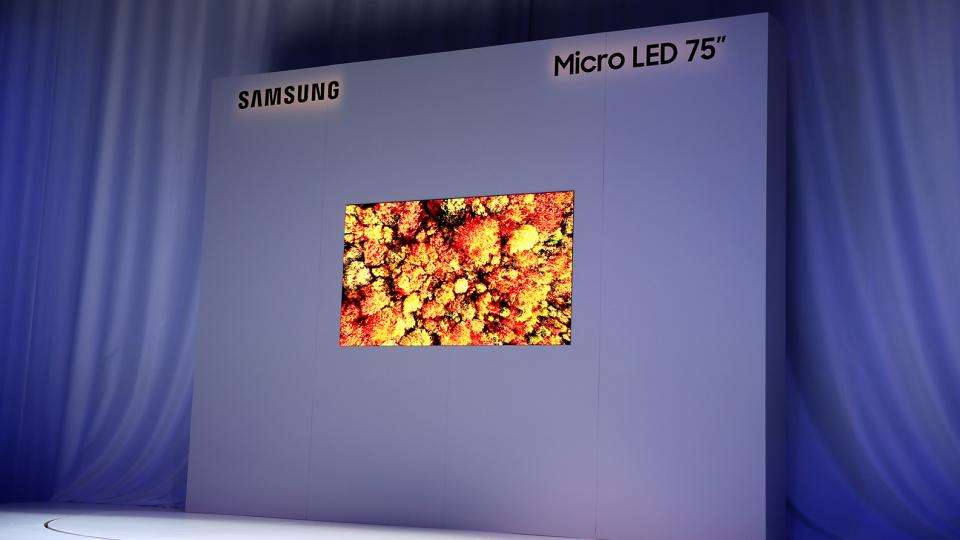There was a great deal of excitement at CES 2019 about Samsung’s new MicroLED TV. Several websites gushed so heavily about the technology that you’d be forgiven for thinking it was the Second Coming instead of a fancy way to watch Netflix.
So what is MicroLED and what sets it apart from the hordes of other acronyms and logos that line the boxes of audio-visual hardware? Well, in short, it’s likely to be the future of flat panel displays, bringing all the benefits of OLED displays without the drawbacks. That’s certainly something to be excited about, although it could still be some time before you have a MicroLED TV in your living room.
What exactly is a MicroLED?
As the name suggests, MicroLEDs are tiny light emitting diodes (LEDs). Remember soldering those into shoddy electric circuits when you were at school? Now imagine connecting thousands upon thousands of microscopic versions, each one forming an individual pixel on a screen. That’s getting close to what a MicroLED setup is made of; the challenge being the job of calibrating all of these tiny lights to deliver consistent brightness and colour.
READ NEXT: The best TVs available to buy
The technology has been around since 2000 but barriers around production have so far stopped it translating to a commercial product. Initially, analyst thought it could make its way to smaller displays like smartphones and smartwatches but it turns out to be incredibly hard to pack MicroLEDs in that density.
Samsung’s 75in MicroLED TV, unveiled at CES this year, is a smart move, given that TV screens have a much lower pixel density than smartphones and are therefore comparatively easier to produce. Even then, it has taken a long time to get towards an actual product, and Samsung has yet to give any information about the price and availability of its new screen.
How does MicroLED compare to OLED?
Up to now, OLED has been the benchmark for premium TVs . OLED panels produce their own light, meaning black is black and not grey as it is with regular backlit LCD screens. This also means OLED panels can be thinner. So, in a nutshell, OLED TVs are thin, have superb black quality and, as a result, colours stand out more.
But they also degrade. The O in OLED stands for organic and the organic compounds they rely on decay over time. This can make OLEDs weaker in the longer term and can lead to inconsistency and nasty effects like screen-burn. MicroLEDs, on the other hands, are inorganic, and therefore avoid the pitfalls of...well, death.
MicroLEDs are also much more energy efficient than OLEDs since they can be manufactured with tiny parabolic mirrors that reflect light towards the viewer, meaning there’s less light that escapes your eyes. This energy efficiency is the main reason MicroLEDs could be a great fit for smartphones and smartwatches, potentially improving battery life in those devices.
It might not be long until we see this become a reality. Apple reportedly has a secret team working on MicroLED displays for its hardware . In the meantime, Samsung is leading the pack with its MicroLED 4K TV. When it is eventually released, it should combine outstanding brightness and colour accuracy with a long life span and greater energy efficiency.

